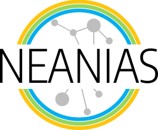About us
INAF (National Institute for Astrophysics) is the Italian Research Institution that realizes and coordinates researches in the specific fields of Astronomy, Radio- Astronomy, Spatial researches and Cosmology in collaboration with Universities and other research Institutions. More than 1,200 people are involved in the institution. INAF has twenty research institutes in Italy and two National facilities: “Telescopio Nazionale Galileo (TNG)” in La Palma, Canary Islands and the Large Binocular Telescope (LBT) in Mount Graham, Arizona. The main research activities of INAF are in the following areas: Solar Physics, Stellar Physics, Extragalactic Astronomy and Cosmology, High Energy Physics, Astroparticles, Virtual Observatory, HPC and HTC technologies. For astrophysics roadmap, ESFRI indicates that the absolute priority for the next decade are the following ground-based infrastructures: E-ELT (European Extremely Large Telescope), SKA (Square Kilometer Array), CTA (Cherenkov Telescope Array), and KM3NeT (Cubic Kilometer Neutrino Telescope). Regarding the science from space, Astronet competes with the priorities identified in the ESA Cosmic Vision document: IXO, Europa Jupiter System Mission / Laplace Missions LISA, EUCLID, PLATO, Solar Orbiter, GAIA.
Know more about us at http://www.inaf.it/.
Main role in the project
INAF is leading the Space environment and the development of the Space services (WP4) and is also mainly involved in the core services implementation (WP6) and delivery (WP7). Within the NEANIAS project 3 main INAF research groups are involved, all of them having international and large experience in: a) Galactic Plane. INAF IAPS-Rome has more than a decade-long experience in handling, reducing and analyzing data from infrared to submillimetre gained by leading large observing programs with recent space telescopes, i.e. Herschel, and projects dedicated to the analysis and the scientific exploitation of all the most recent surveys of the Galactic plane both in multi-band continuum imaging and the multi-line gas. b) Radio Astronomy. INAF OA-Catania has acquired high level capabilities in dealing with radio data focusing in the last years especially on the Galactic Astronomy frame, which allowed to face different and difficult challenges not only regarding the data reduction itself, but also in the automatic source extraction and classification in the context of SKA and precursors (ASKAP, LOFAR, MEERKAT). c) Information Technology. INAF OA-Catania ICT group has developed services at TRL6 level for data discovery, visual analytic, virtual reality and machine learning on EOSC. The main activity within the project will be to port the services on the EOSC hub for the Space R&D but also contributing for all the consortium partners.
